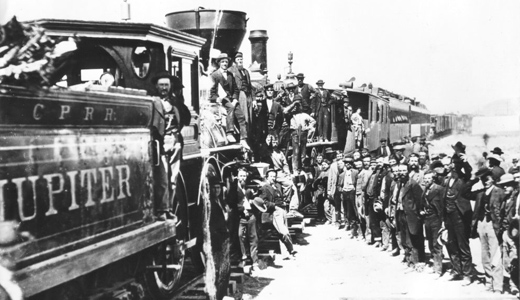
WASHINGTON – Researchers Lina Khan of the New America Foundation, and Sandeep Vaheesen of the American Antitrust Institute have just published a new study that exposes another reason for the rise of the one percent and ever-widening chasm between the rich and the rest of us: The U.S., in so many words, is going back to The Gilded Age, and not just in incomes and wealth.
For them, economic concentration, unchecked by government, and its effects, notably less competition, are another reason for the yawning gaps.
“The return of plutocracy to America was no accident,” they wrote in an op-ed piece in The Washington Post. “The drastic decline in market competition has been a result of conscious political decisions.”
Khan and Vaheesen point out that monopolies and oligopolies were a key characteristic of the first Gilded Age, from the 1870s through 1910 or so. Think of the “trusts” of that day: U.S. Steel, Standard Oil, the Guggenheim mining operations, the three or four big railroads that controlled all freight traffic, Northern Securities – an enormous holding company which Teddy Roosevelt busted – giant utility firms, J.P. Morgan’s bank, and so on.
Those trusts monopolized commerce, setting freight rates, cutting workers’ wages, eliminating farmers’ profits, seizing their land. Trusts controlled the banking system and credit. Trusts colluded on prices and wages and used the power of government to enforce their demands. They bought and sold politicians: A Thomas Nast cartoon of the era shows the U.S. Senate of bloated top-hatted lawmakers labeled “gold trust” “oil trust” and “copper trust”.
And it’s the Gilded Age that gave us the original U.S. Supreme Court ruling that corporations had the same rights that people do. The current court says so, too.
The result: Those oligopolists amassed billions. But we the people fought back.
Public pressure forced Congress to regulate the railroads, which were the prime freight carriers of the day, their study says. Lawmakers passed the Sherman Antitrust Act and Clayton Antitrust Act, the Food and Drug Act, regulated meat packing and established the Federal Trade Commission. All this, plus enforcement by Presidents Teddy Roosevelt and Woodrow Wilson, the researchers add, broke the economic concentration of The Gilded Age.
Well, their study adds, here we go again.
In key industries, they note, market consolidation leads to monopolies, oligopolies, barriers to competition, huge price increases to consumers and huge fortunes to plutocrats.
Now, four meatpackers control three-fourths of the market. The big four airlines – Delta (which devoured wall-to-wall union Northwest), United, Southwest and American-US Airways – account for 68.7 percent of all passenger miles. The top four broadband providers have 63.5 percent of all subscribers. The top four cable TV firms account for two-thirds of all of that medium’s customers. We haven’t even talked about trucking deregulation and its impact.
And the chart listing those sets of oligopolies didn’t even mention an even more-pernicious one: The banks. The top four have more than half of all U.S. deposits. “Too big to fail” is even bigger now than when we the taxpayers had to bail them out six years ago.
But where is the government? The answer to that question, the researchers say, is that it’s abdicated its responsibility. The FTC hasn’t objected to megamergers. The Justice Department sets some conditions on some of them, but shies away from breaking them up. Congress stands aside, cowed by the campaign contributions and SuperPACs the oligopolies and their owners finance. And organized labor is not large enough to take them on on its own.
And what do the oligopolies do with the latitude government gives them and freedom it yields to them? They use it to control our lives, shovel our wealth into millionaires’ pockets, lower wages, raise prices, trash workers, destroy unions – think Walmart and its market share – and concentrate more and more economic and political power in the hands of the 1 percent.
There is a double solution to this new Gilded Age, the two authors write: Government must reassert its power to control and crack the oligopolies, and the people must rise up against the oppression. Such a mass uprising, they assert, can start to right the balance between the rich and the rest of us.
“Americans in the Gilded Age freed themselves from the clutches of Standard Oil and the railroads because they knew that markets and economic outcomes were theirs to shape,” the two wrote. “We can change, too, through popular will and political action.”
Photo: Soon after the building of the First Continental Rail Road in the 19th century, all rail freight traffic in the U.S was swallowed by three big companies. Andrew J. Russell, National Park Service, courtesy of Wikipedia (CC)










